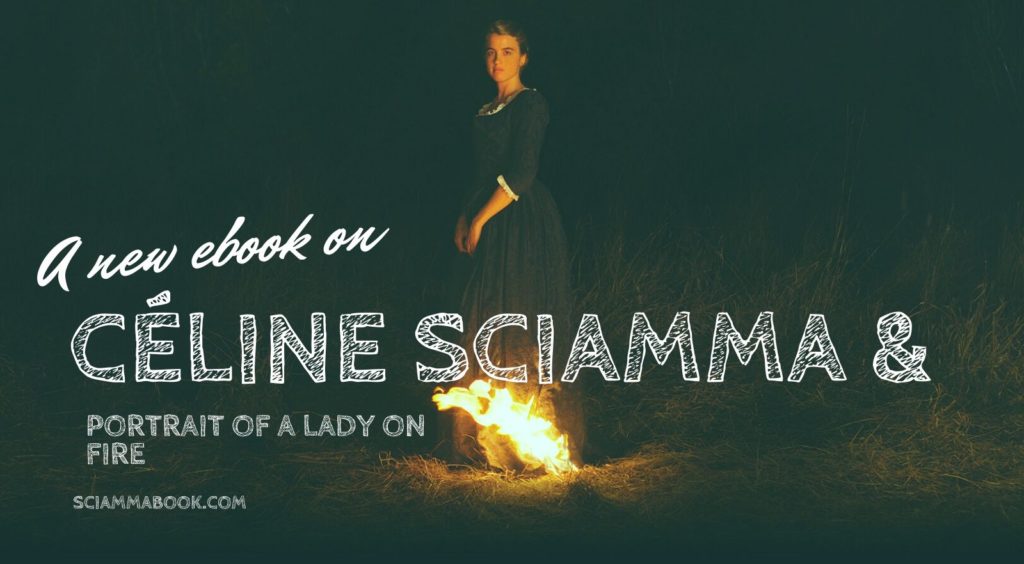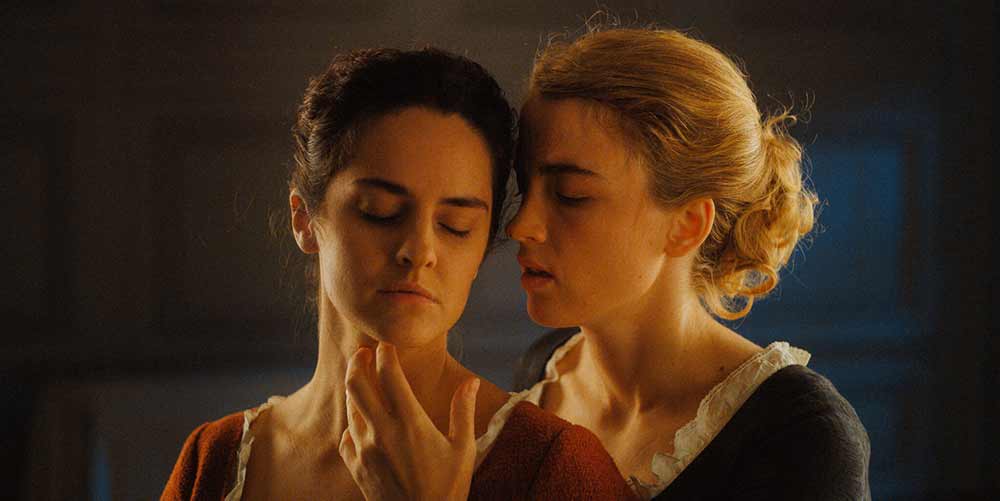Céline Sciamma’s Portrait of a Lady on Fire is a beautiful period romance that upends cinematic stereotypes of the artistic muse. This is a preview of our book about Céline Sciamma’s work and Portrait of a Lady on Fire, Portraits of resistance.

Céline Sciamma’s gorgeous, heart-wrenching Portrait of a Lady on Fire screened on the first day of TIFF, and it became the gold standard by which I evaluated all other films. Watching The Burnt Orange Heresy, I kept thinking, not only how could you cast Elizabeth Debicki, who played Virginia Woolf just last year, as a muse, but in the year of Portrait of a Lady on Fire!? Why should I accept the sexism of Martin Eden, where every female character was an accessory, just because it’s from an early 1900s text, when Portrait of a Lady on Fire, set in the 1700s, gave me three complex women?
Sure, the brute force sound design of Sound of Metal was immersive, despite literally spelling out what it was doing for the audience with subtitles. But how could I be impressed with that when Sciamma’s Portrait almost invisibly used the crashing of waves to ratchet up tension; she also choreographed the rhythm of every step and breath her actors took, crucial to creating the film’s emotional maelstrom, and yet essentially imperceptible.

Setting Portrait of a Lady on Fire in the 1700s allowed Sciamma to create a heightened romance, what she referred to at TIFF as “cinema plus plus”: the costumes had to be carefully chosen because everyone wore the same thing throughout, the setting became all the more important and romantic, and the stakes for the romance were higher, too. Like Call Me by Your Name before it, Portrait is the story of a queer romance bound to a particular place and time — that it has an expiration date makes it no less intense or important.

The winner of the Cannes Best Screenplay prize, Portrait is a masterclass in structure. When I interviewed Sciamma about Girlhood, she talked about wanting to create the “desire to see a face” or “the appetite for [a] face.” Sciamma pushes this to the extreme in Portrait, creating immense suspense in our desire to see Héloīse (Adèle Haenel), the noble woman that Marianne (Noémie Merlant) has been commissioned to paint. We track Marianne on a long journey to Héloīse’s home, and then hear about Héloīse from everyone she knows. Even the first time she appears on screen, we follow her from behind, on tenterhooks for her to turn around and show us her face.
Sciamma’s film only gets more complex and thoughtful from there, exploring women’s limited opportunities in the 1700s, the forgotten female artists of the time, the consequences of indulging one’s sexuality with men (a subplot involves multiple abortive attempts), and finally, the egalitarian love that two women can find in each other. At the same time, Sciamma deliberately upends any ideas of artistic muses. Marianne may start out thinking Héloīse is merely her subject — a feeling heightened by the fact that she must observe her closely in order to paint her in secret — but Sciamma reminds us Héloīse is observing Marianne, too. The romance that follows feels contemporary even as it’s believably rooted in the constrictions of the day.
This is a big film with big ideas, one that will reward rewatches, rethinking, and in-depth analyses. And we at Seventh Row have a lot of this planned in the coming months, including in-depth interviews with Sciamma and Haenel. Stay tuned for an even bigger announcement about how we’ll be giving Portrait of a Lady on Fire the Seventh Row treatment it deserves.

